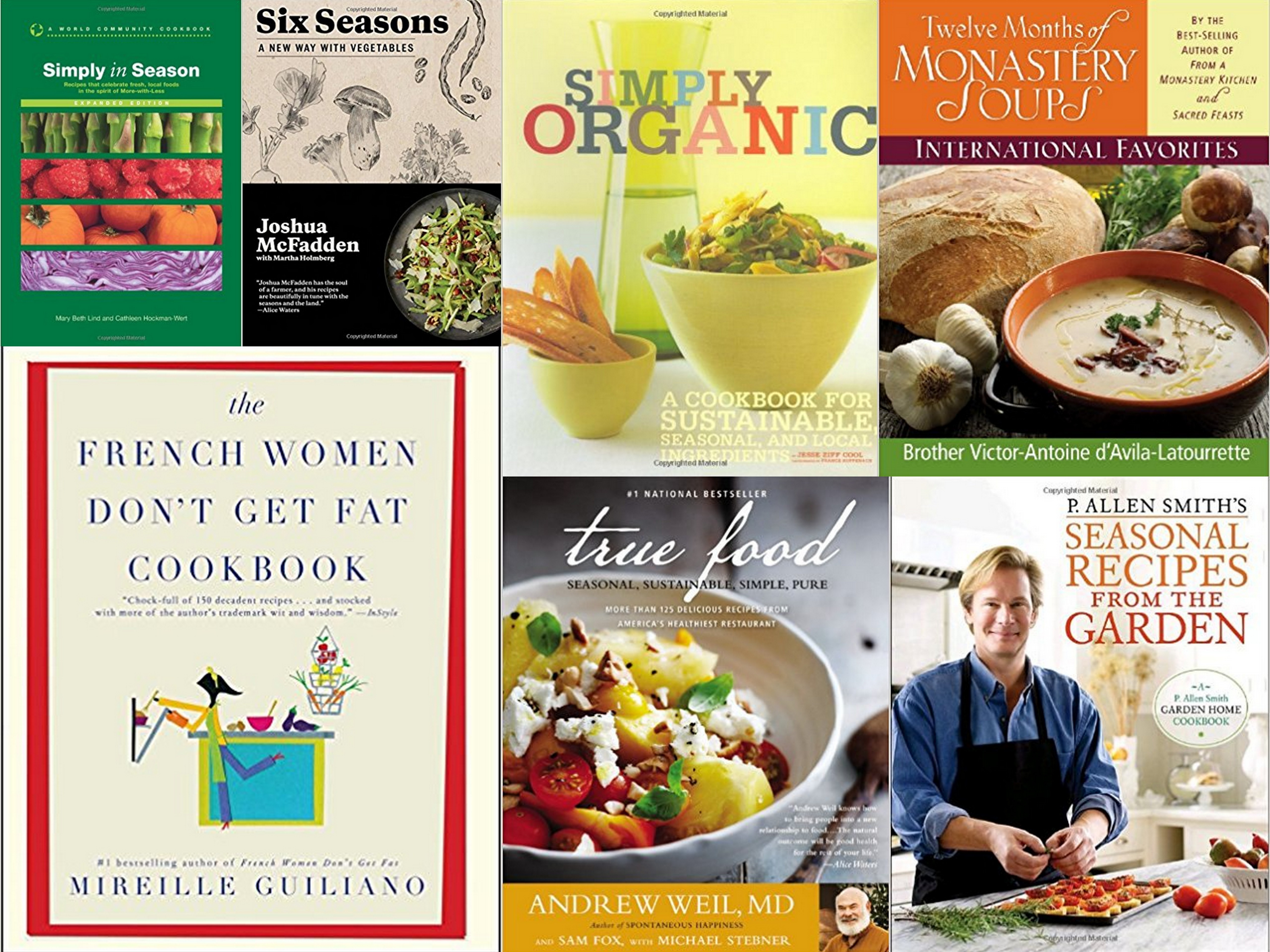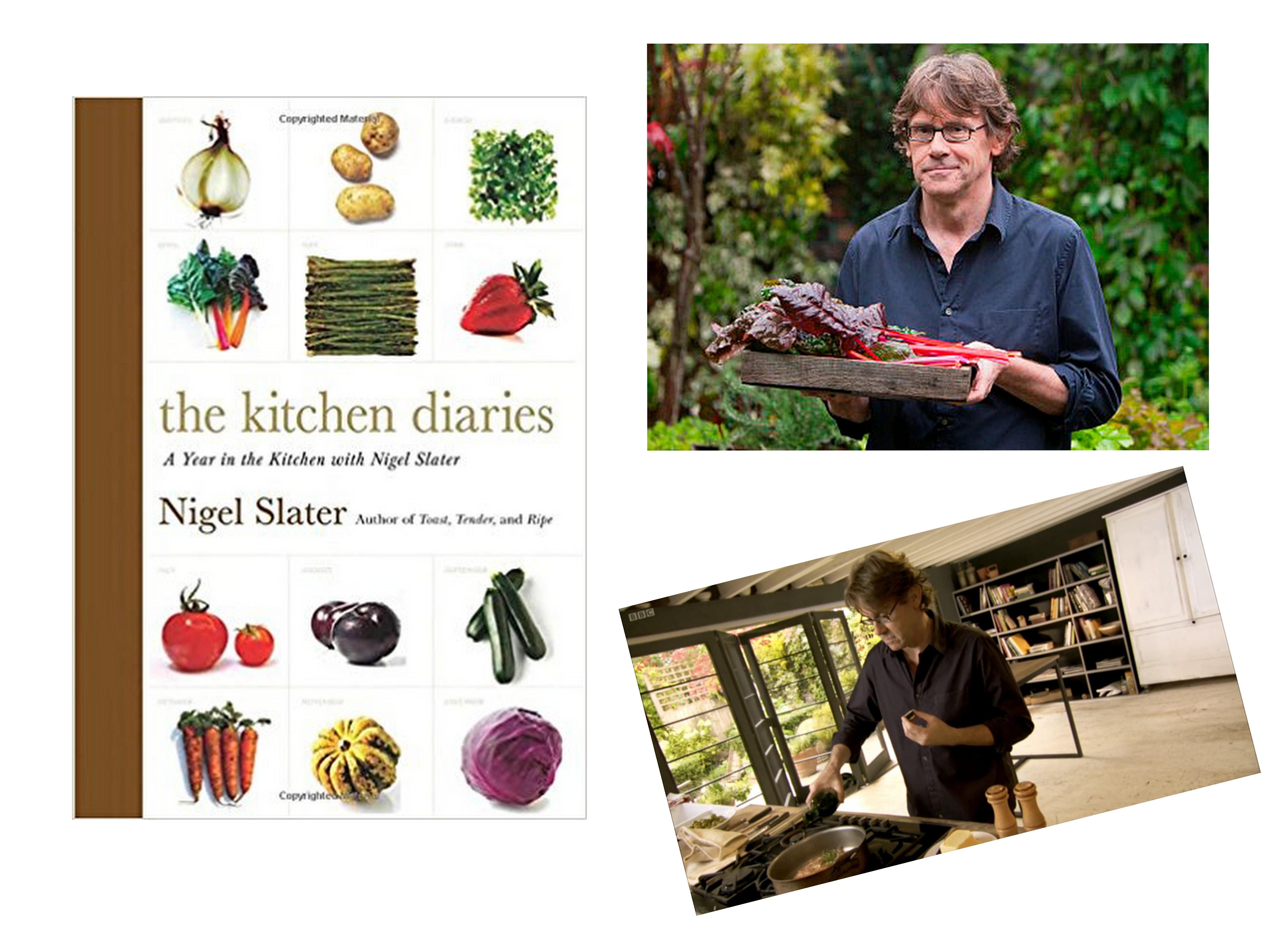165: How to Enjoy Eating Every Day and Love the Results
The Simple Sophisticate - Intelligent Living Paired with Signature Style - A podcast by Shannon Ables - Miercuri

Categories:
~The Simple Sophisticate, episode #165
~Subscribe to The Simple Sophisticate: iTunes | Stitcher | iHeartRadio

"Right food, right place, right time. It is my belief . . . that this is the best recipe of all. A crab sandwich by the sea on a June afternoon; a slice of roast goose with applesauce and roast potatoes on Christmas Day; hot sausages and a chuck of roast pumpkin on a frost-sparkling night in November. These are meals who success relies not on the expertise of the cook but on the more basic premise that this is the food of the moment - something eaten at a time when it is most appropriate, when the ingredients are at their peak of perfections, when the food, the cook and the time of year are at one with each other." —Nigel Slater in The Kitchen Diaries: A Year in the Kitchen with Nigel Slater
Being able to have what we want is not always a blessing. But having what we need is imperative to our well-being, and what we need is nutrient-rich food and when it tastes its most delicious, it is all the more attractive to enjoy. Supermarkets have made the food we love available for consumers year-round, but we all know a tomato in December here in the states tastes nothing like its summer counterpart. Instead pick up an apple or if you are in Hawaii or on the west coast, a rambutans (seasonally available September through March). Satisfy your sweet-tooth and eat what is readily avilable and full of flavor. I can only speak for myself, but part of the reason I fall into the habit of eating the same vegetable, fruit or meal year round as a go-to is it's easy, I think it saves me time and I don't have to think about it. And while it does ease the need to have to figure out what to eat each night or for lunch, it isn't actually the best for my health. Initially, it will take time and our full attention to learn what is in season and know what to do with it when we get it back to our kitchen, but once we gain this knowledge, it becomes a habit. In essence, we are becoming our own home chef capable of cooking anything with fresh ingredients and what is left in the refrigerator. This feat may sound impossible, and you may be someone who doesn't love to cook, but most of us eat at home a majority of the time, so it doesn't have to be a passion and you don't have to be a foodie to learn the basics of seasonal cooking. Your health, your waistline and your peace of mind will thank you. 1. Shop at small local shops, markets and specialties businesses A fish market, a cheese shop, the local bakery, the farm stand, your neighbor's petite produce stand, choosing to frequent such food options rather than the giant supermarket will make the shopping experience far more pleasurable and the food you purchase will be fresher and most likely in season. As well, you can begin to establish relationships with the experts who run each business, ask them questions and learn about what you will be eating and feeding those you love. 2. Shop once a week for stock up items in the épicerie, but day to day for fresh food
"[The Kitchen Diaries] is a gentle plea to buy something, however, small, each day, to take time to shop, to treat it as a pleasure rather than a chore." —Nigel Slater
The weekly capsule menu is something I believe works wonderfully for planning the meals for the week and the ingredients, which should be versatile, for each recipe item. And while I typically do a weekly shopping run to my farmers market or Trader Joe's, I do stop by the local produce stand or the bakery, etc. throughout the week to ensure I have the freshest ingredients. 3. Curate a kitchen space that works well, no fancy gadgets necessary As anyone who has traveled in Europe and England will attest, kitchens are very small even in the most grand of cities, and while many people especially in Paris and London and well, name your favorite destination, will want to dine at the many restaurants, cooking in a small kitchen is very possible. So don't let the size of your kitchen be the roadblock. I always think of Rachel Khoo in her little Paris kitchen cooking away in minimal space. Most importantly, regardless of space, make sure you have the basic tools and essentials as well as a well-stocked épicerie. See my detailed list for both here. 4. Plant a garden, no matter how much space you have. Whether you have a large plot of land or a window sill, plant what you can, what you're curious about and with each year, add something different, try something new. As well, try to plant something to be enjoyed in each season: rhubarb in the early spring, strawberries in late spring, fresh herbs all summer (sometimes year round depending upon where you keep them), squash and pumpkin in the fall, the possibilities are endless. Have fun and play in the dirt. 5. Educate yourself on seasonal offerings Whether from books, cookbooks are a delight to read, and you learn as you peruse each recipe especially if it is organized seasonally, or textbooks, food television programs or your local farmer, become curious about what is in season where you live. Choose to see it as an adventure of discovery. When I approach cooking this way, I don't kick myself if something doesn't work out, I celebrate the opportunity to try and regardless the food (because it's in season) is usually delicious (again, not because of my prowess, but because seasonal food is good all on its own). I found this very helpful online source for all fifty states. You simply choose your state, the season and voila! It shares not only the produce that should be available and at its freshest, but recipes as well. ~Eat the Seasons (a helpful guide for North America and United Kingdom citizens) ~Epicurious is also a worthwhile resource for recipes on seasonal food, organized by the season 6. Discover the power of food The list is long of which to read to learn about what is the best balanced diet and how and where to find the nutrients you seek, but understanding where you can find fiber (grains - the less processed the better) and understanding exactly what an avocado gifts to your body encourages you to step toward these foods with curiosity and not fear that you are going to be eating too much fat or calories. With these two items, they will satiate you long before the calorie count is anything to worry about, and fat isn't bad, remember this.
"Roast rhubarb on a January morning; 'pick-your-own' strawberries in June: a piece of chicken on the grill on an August evening . . . This is more than just something to eat, it is food to be celebrated, food that is somehow in tune with the rhythm of nature. Quite simply, the right food at the right time."— Nigel Slater
7. Have a plan The primary reason I have created seasonal capsule menus is to provide a starting point or foundation for how to cook seasonally in fall and spring (summer and winter will be coming in my second book to be released in 2018!). With time and practice, you'll begin to incorporate your favorite ingredients and discover which recipes you like and even create your own. 8. Keep it simple Truly, the best meal you will make on a regular basis should be simple, because again, it is the food, the quality of food, that makes it so. For example, my go-to recipe for vegetables year round is to roast them. Name the vegetable and for the most part, I will roast it. Asparagus in the spring, add some lemon and a bay leaf; zucchini and squash in summer and fall - olive oil drizzle, salt and pepper - 400 degrees for 30 minutes; broccoli in the fall through early spring. Oh, and I just tried roasted cauliflower finished in the last two minutes with Gruyère and Parmesan - delicious! 9. Try learning and incorporating a new habit each week Perhaps one week you will learn and become confident with roasting, maybe the next week making your own herb butter, then the next a beloved go-to vinaigrette. Whenever you eat out and you taste something you love, ask the chef how they made it (or the waiter/ess to ask the chef). I recently had the most delicious huckleberry ricotta mousse, and out of curiosity (as huckleberries have a very limited season) I wanted to remember this recipe for the next year. They happily shared the ingredients, and I went online and found a ricotta mousse recipe from a trusted source and adapted it to my taste. (Check out my recipe for Homemade Ricotta Mousse with Fresh Berries here.) 10. Dine at farm to table restaurants One of the best ways to learn about seasonal food is to try it as it is prepared by well-trained chefs. More and more restaurants are following this model of seasonal recipes and in so doing are teaching and informing their patrons how to cook delicious food at home. Learning how to feed our bodies well takes time, but hopefully with these tips, the journey through the seasons will be pleasurable, delicious and an experience to savor rather than a task to complete.
"The doctor of the future will give no medication, but will interest his patients in the care of the human frame, diet and in the cause and prevention of disease." ~Thomas Edison
~Below are a handful of seasonal cookbooks that come highly recommended, some new, some time-tested. 
- ~Six Seasons: A New Way with Vegetables
- ~Simply in Season
- ~Twelve Months of Monastery Soups: International Favorites
- ~French Women Don't Get Fat Cookbook
- ~Simply Organic: A Cookbook for Sustainable, Seasonal, and Local Ingredients
- ~True Food: Seasonal, Sustainable, Simple, Pure
- ~P. Allen Smith's Seasonal Recipes from the Garden: A Garden Home Cookbook
~SIMILAR POSTS FROM THE ARCHIVES YOU MIGHT ENJOY:
~Farmers Markets: How to Make the Most of Your Visit No Matter Where You Live
~A Capsule Menu: What It Is and How to Create Your Own
~Why Not . . . Feed Your Body Well?
~Why Not . . . Keep It Simple in the Kitchen?
~Why Not . . . Cook with Olive Oil?
~Why Not . . . Buy Local Produce?
~Why Not . . . Treat Your Body Like a Temple?
Petit Plaisir:
~The Kitchen Diaries by Nigel Slater

Today's sponsor of The Simple Sophisticate was Trunk. A journaling app to keep your thoughts saved recorded and a daily habit. Try it free for 30 months without having to share your buying information. If you like the app after 30 days, you can buy it when prompted. Currently available on iTunes - find it here.
